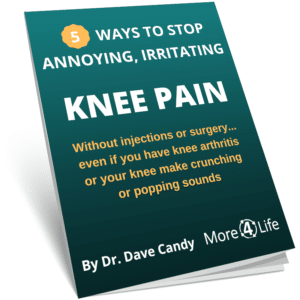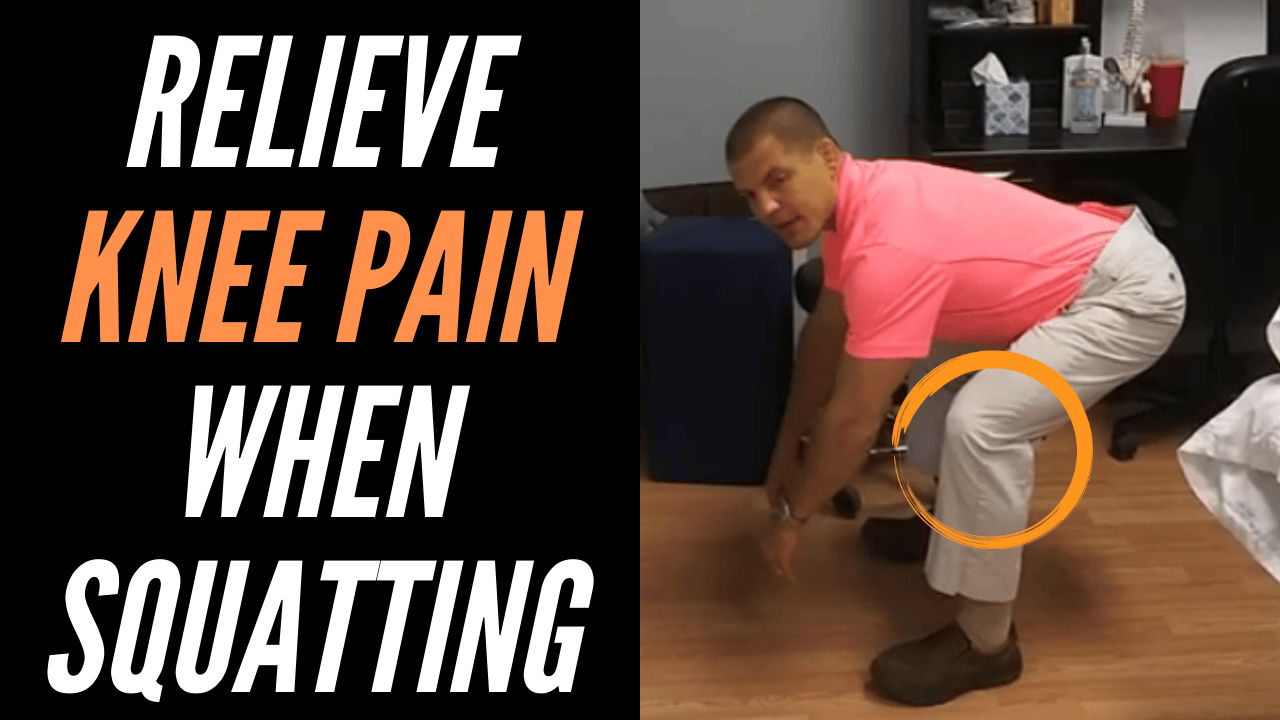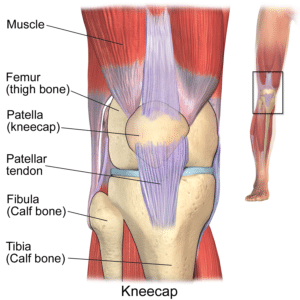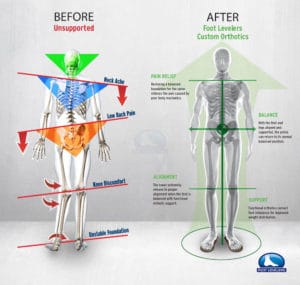Do You Get Knee Pain From Squatting Down?
Watch the video to learn 2 simple tips relieve knee pain from squatting down

Why Do I Get Knee Pain From Squatting Down?
There are several different things that can cause knee pain from squatting down. To determine the cause of your knee pain, it helps to understand where your knee hurts when you're squatting.
Common places people get knee pain from squatting down:
- Pain on the front of the knee below the kneecap
- Pain deep inside the joint behind the kneecap
- Pain on the inner side of the knee
- Pain on the outer side of the knee
Which pain you have determines which of the tips on this page will work best for you.
Front Of Knee Pain From Squatting Down
Front of knee pain from squatting usually comes from either patellar tendinopathy, or patellofemoral (kneecap) pain.
Pain On Front Of Knee Below Kneecap
Patellar tendinopathy comes from excessive force on the patellar tendon when doing weightbearing activities such as squatting down. If your pain is on the front of the knee just below the kneecap, chances are it may be patellar tendinopathy.
Pain Deep Behind Kneecap
Pain on the front of the knee behind the kneecap often comes from compression of the cartilage on the back of the patella (kneecap) rubbing up against the femur (thigh bone). This can be caused by a stiff rectus femoris or IT band. It can also be caused by chondromalaica, knee arthritis, or other knee cartilage problems.
How To Relieve Front Of Knee Pain From Squatting Down
Use these tips to relieve knee pain from squatting down:
- When squatting, you don’t want your knees to go in front of your toes. This puts more stress on your quadriceps muscles (the muscles on the front of the thigh). Your kneecap sits inside the tendon of the quadriceps, and putting too much tension on this muscle while trying to squat creates a lot of compression of the kneecap on the thigh bone. This can even cause a grinding sensation or even a grinding noise.
- You can avoid your knees going in front of your toes by starting out your squat by pushing your hips backward and leaning your trunk forward. This puts your bodyweight more toward your heels than your toes, and it also causes you to shift more of the effort to your hip extensor muscles (your hamstrings in the back of the thigh and your gluteus maximus - a.k.a. your butt).
- The deeper you squat, the more you will have to lean your trunk forward to keep from falling backward. When first practicing this, do it in front of a study chair or couch. You’ll probably like you’re going to fall backwards, so have a seat to land in just in case.
- Come back up to standing by pushing your hips and pelvis back underneath of you and rolling your pelvis underneath you. This allows you to stand back up using more effort from your powerful hip extensor muscles and less of your thigh muscles. This means less compression on your kneecap, and hopefully less knee pain from squatting.
Click here to learn more about pain on the front of the knee.
Inner Or Outer Knee Pain From Squatting Down
Inner or outer knee pain from squatting down is often related to a rotational problem in the legs.
This can be a result of muscle imbalances in the joints around the knee – the low back, hips, ankle, and foot.
Often times the knee itself is not the problem, it’s just the thing that’s sitting in the middle getting beaten up by the problems above and below it.
One of the most common problems is the arch of your foot flattening and your knee going inwards.
Again, this can be caused by imbalances in several different joints.
There are several ways you can stop this from happening:
- You could do exercises for each of those particular joints. However, those joints all work together in a functional movement like squatting.
- You could wear orthotics to support your feet when squatting. That is often helpful, but it may not fully take care of the problem by itself.
- You could work on all of those joints at the same time just by fixing the way you squat down.
How To Relieve Inner Or Outer Knee Pain From Squatting Down
Use the tips below to relieve inner and outer knee pain from squatting down.
- Start by standing in a comfortable position. Don’t worry about which direction your feet point.
- No matter which direction your knees point, turn your knees outward slightly so that your knees are lined up pointing in the same direction as your feet. This will likely cause you to put more weight on the outer side of your foot and cause your arch to lift slightly.
- Slightly scrunch your toes to get your big toe to touch the floor while still keeping the arch of your foot lifted.
- Use the tips previously mentioned, pushing your hips backward and leaning your trunk forwards, keeping the weight on the back, outer side of the foot to keep your arches lifted and knees over toes when squatting down.
- Only squat as deeply as you can without allowing your foot to flatten or your knees to go inwards. If you feel like you hit a stopping point, notice where you feel the limitation in movement (often in the front or back of the ankle, or front or back of the hip joint), and then come back up.
Using the techniques above should help to decrease or eliminate your knee pain from squatting down.
If you do notice that the depth of your squat is limited when using this technique, whether by pain, or by motion limitation, adding a few specific exercises to target the problem area may be helpful.
This will be a little different for each person based on their particular needs.
There’s not one “standard” set of exercises that work for everyone with knee pain.
If you'd like to discover the cause of YOUR knee pain and what you can do to relieve it so that you can squat more comfortably, click the button below request a Free Discovery Visit with one o our specialists.
Like this post? Check out our other posts on knee pain including:
How To Stand Up From Sitting Without Knee Pain
5 Tips To Prevent Back, Hip, And Knee Pain Getting Out Of The Car




